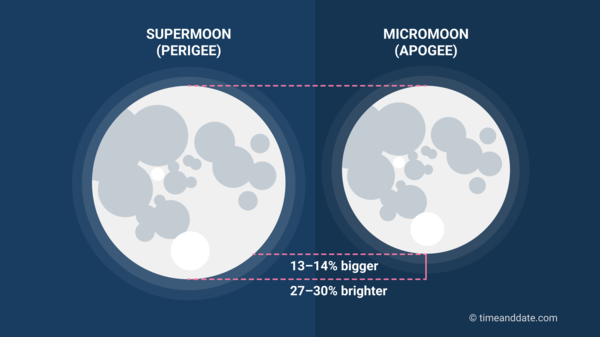SUPER BLUE MOON
Rakhi is celebrated on the Purnima of the month of Shravan — on August 30-31 will be unusual: it will be both a “blue moon” and a “super moon” and therefore, a “Super Blue Moon”, a rare trifecta of astronomical events.
This special moon will rise at 6.35 pm in Delhi on August 30, a little later in Mumbai, and about an hour earlier in Kolkata.

2. What is a Super moon?
- The orbit of the moon around the earth is not circular; it is elliptical, that is, an elongated or stretched-out circle. It takes the moon 27.3 days to orbit the earth
- It is 29.5 days from new moon to new moon, though. This is because while the moon is orbiting the earth, both the earth and the moon are also moving around the sun and it takes additional time for the sun to light up the moon in the same way as it does at the beginning of every revolution around the earth
- The new moon is the opposite of the full moon it is the darkest part of the moon’s invisible phase, when its illuminated side is facing away from the earth
- The point closest to earth in the moon’s elliptical orbit is called perigee, and the point that is farthest is called apogee.
- A super moon happens when the moon is passing through or is close to its perigee, and is also a full moon
- A full moon occurs when the moon is directly opposite the sun (as seen from earth), and therefore, has its entire day side lit up.
- The full moon appears as a brilliant circle in the sky that rises around sunset and sets around sunrise.
- The moon appears ‘full’ not just on Purnima, but also on the night before and after the full moon night

- The term "blue moon" has two meanings. It can refer to a second full moon in a single calendar month, which is a rare occurrence. It can also refer to the third full moon in a season that has four full moons, which happens about every 2.7 years
- The second definition is the more common one, and it is the one that is used in the phrase "once in a blue moon". This phrase means that something happens very rarely.
- The moon does not actually turn blue during a blue moon. The name comes from the way that the Old English word "belewe" (meaning "betrayer") was sometimes used to refer to a second full moon in a month.
- This is because the second full moon would "betray" the farmers who were using the lunar cycle to plant their crops
- A true blue moon, when the moon actually appears blue, is a very rare occurrence. It can happen when the moon passes through dust particles from a volcanic eruption or forest fire.
- The dust particles scatter red light, making the moon appear blue.
- The next blue moon will occur on August 19, 2024. It will be a seasonal blue moon, which means that it will be the third full moon in the summer season
- Sometimes, smoke or dust in the air can scatter red wavelengths of light, as a result of which the moon may, in certain places, appear more blue than usual. But this has nothing to do with the name “blue” moon
- Speaking of colours, you may have noticed that the moon appears more yellow/ orange when it is lower in the sky (closer to the horizon)
- This is because moonlight travels for longer through the atmosphere at this stage, and along the way, more of the shorter, bluer wavelengths of light are scattered, leaving more of the longer, redder wavelengths.
- The NASA explainer points out that dust or pollution can end up deepening the reddish colour of the moon
- According to NASA, a full moon at perigee (super moon) is about 14% bigger and 30% brighter than a full moon at apogee (called a “micro moon”).
- However, it is unlikely the difference in size will be noticeable by most people.
- The moon could appear somewhat brighter, though but whether you are able to make out the difference will depend on factors such as the so-called ‘Moon illusion’, and how cloudy or polluted it is at your location




